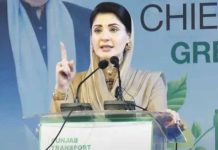Abdul Rashid Shakir
India’s hegemonic posture and expansionist designs in the South Asia can be well appreciated if we dissect its lethal miscalculations on economic and political fronts.
Economically, Indian authorities boasted of their upsurge in the emerging market countries, and their joining multi-trillion dollar economies club with $2.8 Trillion GDP and export revenue of around $324 Billion in 2019. Its impressive IT industry, with around $147 Billion exports, tempted it to aspire for a bigger-than-stature role in international power politics. But ostensibly, blindfolded by this illusion of self- aggrandizement, Indian policy makers ignored their dismal performance on major socio-economic indicators. Raging poverty, alarming law and order, miserable condition of human rights and minorities mock at Indian claims of economic turnaround. Seriously hit by COVID-19 pandemic in recent times, its progress on any of the 17 Sustainable Development Goals (SDGs) is not enviable. Moody’s recently published revised economic growth outlook for 2020 shows India growing at -8.9%. Its poor score of Gini Coefficient, a gauge of income distribution inequality among population, further augments this bleak picture of Indian social fabric.
Politically India takes credit in being world’s biggest democracy with a population of over 1.3 Billion. It is proud of inheriting British legacy of running democratic institutions. But unfortunately, it is oblivious of nurturing basic values needed for the democracy to flourish: higher literacy rate, economic self-sufficiency, and freedom of expression through independent media.
Ground realities in India paint a gloomy picture. Firstly, India dropped 10 point to 51st position in Economist Intelligent Unit’s 2019 Democracy Index that measures state of democracy worldwide in 165 independent states and two territories. They have cited erosion of civil liberties as the main cause of this sharp dip in democratic outlook of the country. Secondly, distribution of wealth in India is so skewed in favor of rich that Just 1% of its richest elite own 58.4%, and the richest 10% own 80.7% of country’s total wealth. Thirdly, poor quality teaching and learning practices, especially for the children of Schedules Castes, Schedules Tribes and religious minorities, coupled with a custom of early marriages result in
early children drop out from schools. Currently more than 6 million school-age kids are out of school in India. Fourthly, India’s place in Reporters without Borders’s Press Freedom Index has dropped from 136th in 2015 to 142nd in 2020 due to oppressive policies of the ruling BJP government, led by Prime Minister Namenda Modi.
These fundamental flaws in assessing their economic and political worth led Indians to other fatal misconceptions about their diplomatic, tactical, and strategic prowess.
Diplomatically, India being sweet heart of major world powers, behaves like a spoiled child at all international forums, be it United Nations (UN), International Atomic Energy Agency (IAEA), or Financial Action Task Force (FATF). But it failed to understand that world powers are ignoring its whimsical wish list because of its bigger market, in order to secure their economic interests.
Tactically, India tried to assume role of a policeman in South Asia, bullying all its neighbors to stamp its authority in the region. However, quite recently, Nepal’s stubborn stance on Kalapani, Lipu Lekh and Limpiyadhura areas, located at a strategic three-way junction between Nepal, India and China, is a humiliating blow to Indian hegemonic claims in the region.
Strategically, India is projected as a counter weight to China in the region. But historic thrashing of its so-called brave troops by their Chinese counterparts in a non-conventional clash with sticks and clubs in Galway Valley, Laddakh in June 2020 is an eye-opener, not only for Indian authorities but also for their international aides, especially in Quadrilateral Security Dialogue (QSD) or Quad: an informal strategic alliance of the United States, Japan, Australia and India to counter increasing Chinese military and economic power in the region.
In the back drop of more than six-months long standoff with Indian troops across the Line of Actual Control (LAC) in Ladakh, China has strategically cemented its position in the region. It is a massive defeat of India and its sponsors, rather launchers, to encircle China and gain a position of influence in the region. All Indian tactics, like putting a ban on around 150 Chinese Apps, to control China economically would prove counterproductive at the best.
Out of this deep sense of embarrassment, India is imploring China again and again to pull back its troops and maintain status quo in the area to give her an honorable exit from the crisis, but of no avail so far. Currently eighth round of border talks between the two countries has ended inconclusively.
Keeping the aforesaid in view, one can painlessly point at how sham and ill- founded sense of grandeur Indian civil and military establishments harbor. Pragmatism demands that better sense should prevail. India should come out of deep slumber to confront bitter realities plaguing its socio-economic order. It must put its own house in order before aspiring for a global role.










